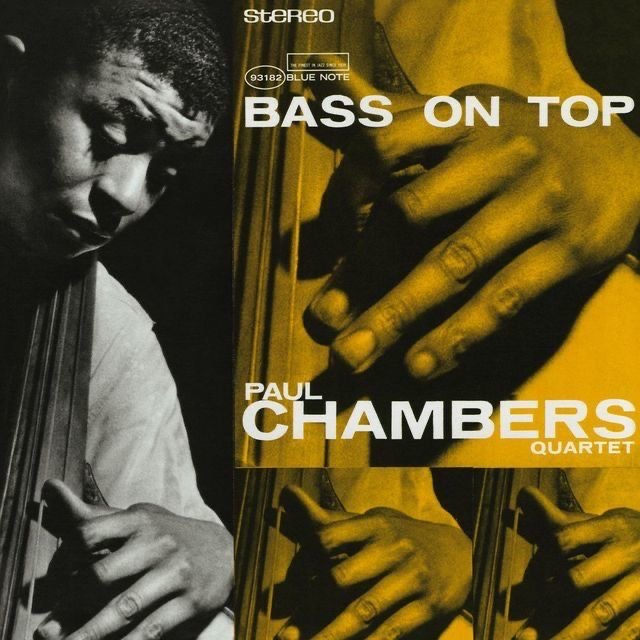Dive into the Power & Passion of ‘Tenor Madness
In the vast panorama of jazz, Sonny Rollins’ “Tenor…
Paul Chambers’ album “Bass on Top” is a masterpiece of jazz, and it all started with a recording session at Rudy Van Gelder’s parents’ living room in Hackensack, New Jersey, on September 21, 1957. The album was released under the Blue Note record label, which was known for producing some of the most iconic jazz records of the time.

As I finished listening to the album, I was struck by the impeccable sound quality and quietness of the vinyl. It truly allowed for each musician to shine in their own right, creating a perfectly balanced and nuanced album. It’s no wonder why it’s considered a classic in the jazz standard.
Each musician on the album had already made a name for themselves leading up to this session. Paul Chambers, the leader of the album, was known for his innovative and virtuosic bass playing, setting the standard for future bassists. Kenny Burrell, the guitarist on the album, was already well-established in the jazz scene, with a signature style that perfectly complemented Chambers’ bass. Hank Jones, the pianist, was also a well-respected jazz musician known for his impeccable taste and intuitive accompaniment. Lastly, Art Taylor, the drummer, was known for his proficiency in modern jazz drumming.
Three standout tracks from the album are “Yesterdays,” “Dear Old Stockholm,” and “The Theme.” In “Yesterdays,” Chambers’ exceptional handling of the bow lifts him above the average bass player, and Kenny Burrell’s embellishments provide a sensitive and pretty accompaniment. Hank Jones and Art Taylor provide a solid rhythmic foundation for the song, allowing for each musician to shine during their solos.
“Dear Old Stockholm,” a Swedish folk song added to the jazz repertoire by Miles Davis, opens with Burrell’s statements sandwiched between those of Chambers and Jones. Each solo is bright and cohesive, sticking close to the melody while retaining the essentially plaintive air of the tune. The many “breaks” in the song lend an unusual and ominous quality.
Lastly, “The Theme” was used as a “sign-off” item by Miles Davis, and it’s clear that Chambers has become quite familiar with the song. His swinging and imaginative bowed solo leads into a swift romp by Kenny Burrell, with Hank Jones, Art Taylor, and Paul Chambers (still bowed) following him with a set of exchanges before the close.
The classic jazz sound created by Paul Chambers on this album is nothing short of brilliant. His innovative bass playing extends beyond the traditional role of a rhythm section instrument, exploiting its qualities as a horn-like solo vehicle. His solos are marked by intelligent and moving lines, with a deep and expansive conception that marks him as a bass player to listen to.
Upon its release, “Bass on Top” was met with critical acclaim, solidifying Paul Chambers’ status as one of the most influential bassists in jazz history. It’s no surprise that the album has stood the test of time and continues to be celebrated for its exceptional sound quality, impeccable musicianship, and timeless jazz sound.
The album cover for “Bass on Top” was designed by Reid Miles, who created iconic album covers for Blue Note during the 1950s and 1960s. The cover features a simple but striking image of Chambers holding his double bass, with the title in bold letters above him. Miles’ minimalist approach perfectly captures the album’s emphasis on the bass, making it an enduring image in jazz history.
“Bass on Top” is not only a must-have for any jazz lover’s collection but is also an essential listen for anyone interested in the history and development of jazz bass playing. Its impact on the genre cannot be overstated, and its influence can be heard in the work of countless jazz bassists who followed in Chambers’ footsteps.
In conclusion, “Bass on Top” is a true masterpiece of jazz bass playing and a testament to the artistry and creativity of Paul Chambers. Its influence on the genre is undeniable, and its timeless sound continues to captivate listeners today. From the exceptional musicianship to the exceptional sound quality, “Bass on Top” is a must-listen for any jazz fan and a fitting tribute to one of the greatest bassists in jazz history.